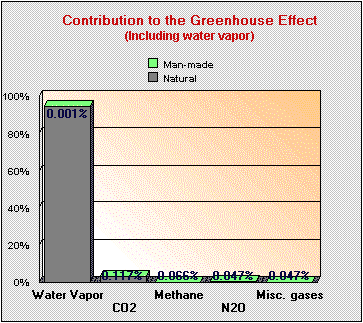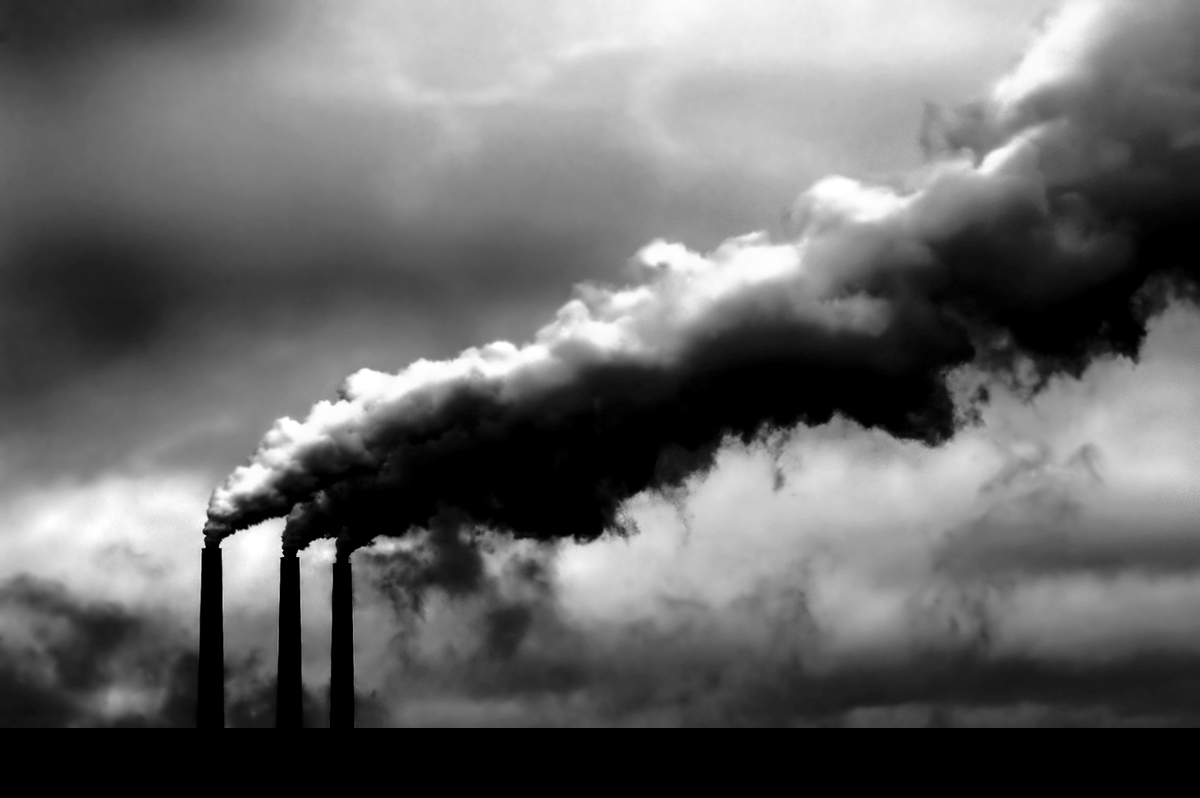Introduction
Global warming is the abnormal rise in the average temperature on the surface of the earth. This has been caused by human advancement towards industrialization and modernization. The outcome of global warming has been exhibited by the melting of ice and snows in areas such as the Antarctic, which has changed the average sea level of the whole world because the ice and snow have been converted into water (Trenberth et al., 2007, p. 15).
If this situation persists the animals that live in those areas will be eliminated because their dwelling place will be destroyed. Also, changes in climate and weather conditions have in the recent past become the order of the day. Series of weather patterns that did not exist before are now prevalent and cooler regions of the world are consistently warming up. This condition has not only affected the livelihood of people but that of plants and animals as well.
This paper reports on the possible effects of global warming on health, complexities associated with it and the significant general implication of the same around the globe. The report starts by reviewing the history of global warming and its contributing factors. This is followed by analyzing the health effects of global warming. In essence, health is the direct culprit of global warming, since all factors affected by global warming constitute the nature and stature of health.
History and Overview of Global Warming
Global warming happens when the temperature rises intensely due to the earth heating up. This starts when greenhouse gases absorb sunlight and energy from the atmosphere. Greenhouse gases include Carbon IV Oxide, water vapour, methane and nitrogen oxide. When they trap heat and energy from the sun, temperatures increase, adversely affecting people, plants and animals. The process that results to rise in temperatures when greenhouse gases trap heat, light and energy from the sun is known as the greenhouse effect (Bast and Taylor, 2007, p.12). The diagram below shows the contribution of each greenhouse gas to global warming by percentage, resulting from the greenhouse effect that constitutes all gases included.

Factors Contributing to Global Warming
As explained in the previous section, greenhouse gases have contributed to the process of global warming. Greenhouse gases are gaseous compounds that occupy the atmosphere, and when their concentration is not stable, they cause temperatures on the lower level of the atmosphere to hike.
The rapid increase in human population has led to the elimination of most forests to give room for human settlements. The trees are very important because they help to prevent the accumulation of greenhouse gases in large volumes in the atmosphere by consuming commendable amounts of carbon dioxide. Trees and other plants consume carbon dioxide to help in generating food supplements for their survival.
Another major contributing factor is the combustion of fuels in factories. Still, the effect of carbon dioxide injected from the combustion of fuels in factories is less harmful compared to excess methane, which is generated from dumping sites. Large volumes of methane are contained in the permafrost and also inside the sea beds of large water bodies like oceans and lakes. These volumes may be released into the atmosphere if the temperatures continue to hike. High temperatures will evaporate water together with methane (Bast & Taylor, 2007, p. 35).
Health Effects of Global Warming
Health and infrastructure
Global warming is a consistent cause of injuries to people and the destruction of property. These catastrophes are as a result of increased global warming over time. Storms and hurricanes that are frequently experienced in the North Atlantic have been associated with global warming in one way or another. The occurrence of such instances leaves behind trails of floods, drowning, injuries and diseases, and bringing down buildings. Storms also lead to increased moisture in the air, which is medically associated with the emergence of respiratory complications and allergies. Increased winds characteristic of the storms cause heavy downfalls as the earth heats up, owing to global warming (Bast and Taylor, 2007, p. 92).
Air pollution
The ozone layer has continuously worn-out due to increased levels of air pollution all over the world. For example, over 100 million people in America live in places where the ozone levels are above the National EPA standards. Increase in air pollution consequently increases the danger of contracting respiratory illnesses. Air pollution is also responsible for the rising levels of smog evident all around the world.

Temperature rise spreads and increases ozone smog in many and different areas, especially urban areas. Many manufacturing firms are located in urban areas as a strategy to cut on operational costs, and for the cheap labour, they access in these areas. Factory emissions are released into the atmosphere by many and diverse industries in many countries. Additionally, poor policies to govern pollution of the air have greatly contributed to the rising magnitude of global warming. Ground-level ozone is also experienced as the number of patients admitted to hospitals with respiratory diseases increase with time. Such conditions are expected to worsen in the long run as global warming becomes prevalent in many countries (Carter, 2007 p. 214).
Heatwaves
Global warming has led to the emergence of heat waves in many countries. Consequently, temperatures rise and fall inconsistently due to these waves. Heatwave causes death, resulting from heat exhaustion and also leads to the emergence of diseases that are caused by high-temperature levels in the body. Such diseases include kidney disease, cardiovascular disease, and at heatstroke. Children and the elderly in society are the common victims of heatwaves. However, most urban areas are not left out either. Urban cities often experience the “urban heat island effect” that results from sharp increases in temperatures (Christy, 2005, p.194). The figures below give a relationship between global warming and prevalent gases.
Role of Atmospheric Greenhouse Gases ( Christy, 2005).
Threat to Food and Water Supplies
Experiences from global warming have so far caused floods and extreme drought at the same time. Floods consequently lead to the contamination of water supplies for drinking and irrigation purposes. Water is a major component of humanity and prosperity of life. Water contamination is also prone to resulting in health complications that arise in waterborne diseases. Quality of water determines the quality of life; holding all other factors constant. Therefore, it is evident that the increase in global warming is likely to interfere with the quality of life in a very significant percentage (Carter, 2007, p.308).
On the other hand, drought leads to the absence of food supplies, not only in the affected area but also in all other areas that may depend on the hit areas for food supplies. Consequently, this reduces varieties of food available and the nutritional value of the available food. The impacts of such an event are prevalence in malnutrition and starvation. All these constitute the effects that come with global warming. Warming up of oceans in countries that practice major fishing activities has considerably experienced reducing fish populations, which adversely affect food supplies in the countries that import fish from such countries. On the same note, higher temperature resulting from global warming increase risks of contracting food-borne diseases (Essex & Mckitrick, 2002, p. 45).
Mosquito and Tick-borne Infectious Diseases
Global warming significantly changes climate patterns. These changes, in turn, affect the patterns of diseases like malaria and dengue fever. Insect-borne diseases are high during warming temperatures and heavy downfalls. According to Trenberth et al. (2007), high temperatures exacerbate pathogen development in insects, which are dangerous to human health. Cooler regions also experience new disease that did not exist before. Conditionality of cold weather that suppresses diseases found in warm and hot regions is broken as global warming persists.
Pollen Allergens
High levels of poisonous gases come in hand with global warming. Such gases contribute greatly to depleting the ozone layer and significantly increase temperatures. Increased carbon dioxide amounts in the atmosphere make seasons of allergenic pollen to start earlier than expected, and last for a longer period than they should (Essex and Mckitrick, 2002, p. 340). An increase in global warming considerably increases the intensity with which the pollen allergens occur. The condition of people who suffer from allergies due to pollen presence is likely to worsen, with asthma and hay fever becoming more prevalent. Therefore, global warming worsens and leads to more complications of health matters as it exacerbates.
Environmental Refugees
Climatic changes are likely to displace persons from their settlements. Global warming has contributed to the ever-rising sea level in many countries. Increase in the sea level to the extent that human settlements are displaced leads to the emergence of environmental refugees. Sea level effects have also left many coastal areas uninhabitable, forcing the inhabitants to flee. Disturbances that accrue from these processes pose great health challenges to the refugees, among them, crowding and transmission of diseases that result from harsh and deteriorated living standards (Essex and Mckitrick, 2002, p. 366).
Conclusion
Global warming affects the health status of people across the globe. This issue is broad, wide, and dynamic. It cuts across the entire human race indiscriminately, and it is, therefore, a global matter that all countries bound to it should address. Air quality has been compromised, with the supply of both water and food raising concerns. Diseases have become more prevalent, with new ones being discovered occasionally. Climatic and weather patterns that were unheard of have become characteristic of daily happenings across the globe. The worst of the impacts of global warming need to be avoided by putting in place proper legislation to address the matter. Health systems also need to be formulated, implemented, and development to protect communities from the emerging health issues caused by global warming.
References
Bast, J. & Taylor, J.M. 2007, Scientific Consensus on Global Warming. Chicago, Illinois: The Heartland Institute.
Carter, R. M. 2007, The Myth of Dangerous Human-Caused Climate Change. Brisbane: New Leaders Conference.
Christy, J. 2005, Temperature Changes in the Bulk Atmosphere: Beyond the IPCC, In Michaels, P. J., ed, Shattered Consensus: The True State of Global Warming, Lanham: Rowman & Littlefield.
Essex, C. & McKitrick, R. 2002, Taken by Storm: The Troubled Science, Policy & Politics of Global Warming. Toronto: Key Porter Books.
Trenberth, K. et al. 2007, Chapter 3: Observations: Surface and Atmospheric Climate Change. IPPC Fourth Assessment Report. Cambridge: Cambridge University Press.